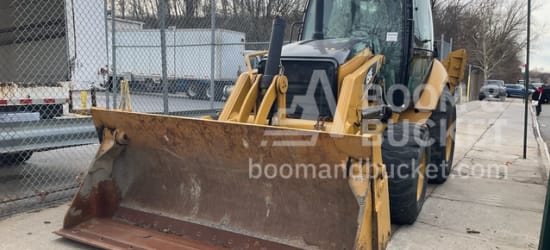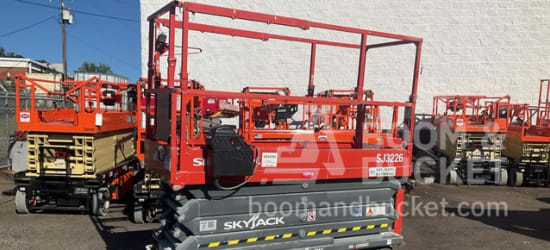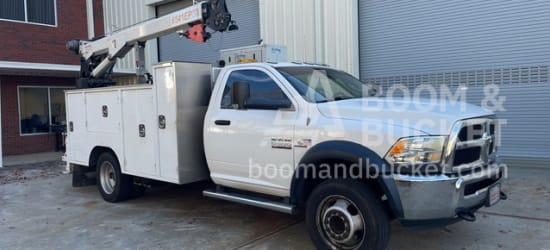:quality(50))
Loaders / Backhoe loaders
The CATERPILLAR 420F2 Backhoe Loader: A Comprehensive Overview
The CATERPILLAR 420F2 Backhoe Loader is a powerful and versatile machine used for various construction and excavation projects. It is a reliable and efficient machine that can handle a variety of different tasks with ease. It is also a cost-effective machine that can be rented for other purposes. This article will provide an overview of the CATERPILLAR 420F2 Backhoe Loader, its most common uses, pricing information, operating weight, estimated monthly maintenance costs, estimated fuel costs per month, and the hourly fuel cost estimation.
Specifications
| Attribute | Amount |
|---|---|
| Model Price | $79,500 |
| Daily rental price | $600 |
| Half day rental price | $300 |
| Weekly rental price | $2,350 |
| Operating weight (pounds) | 24251 |
| Maintenance cost per hour | $8 |
| Monthly maintenance cost | $716 |
| Fuel cost per month | $0 |
| Hourly fuel consumption (gallons) | 0 |
| Monthly financing payments (new) | $0 |
| Monthly financing payments (used) | $0 |
General Overview
The CATERPILLAR 420F2 Backhoe Loader is a powerful and versatile machine used for various construction and excavation projects. It is a four-wheel drive machine powered by a Cat C4.4 engine. It has a maximum operating weight of 24,251 pounds and a maximum digging depth of 13 feet. It also features a two-speed transmission and a hydraulic system that provides superior power and control. The machine also features a spacious operator's cab with climate control, a comfortable seat, and a variety of rules and monitors.
Uses
The CATERPILLAR 420F2 Backhoe Loader is a versatile machine that can be used for various tasks. It is commonly used for excavation projects such as digging foundations, trenches, and pools. It can also move and load dirt, gravel, and rocks. The machine can also be used for landscaping projects such as grading and leveling.
Pricing Information
The CATERPILLAR 420F2 Backhoe Loader has a retail price of $79,500. The cost to rent the machine for a day is $600, for a half day is $300, and for a week is $2,350.
Backhoe
Dig Depth: 14.3 ft (4 m)
Load Height: 11.9 ft (3 m)
Engine
Net Power: 93 hp (69 kW)
Loader
Bucket Breakout Force: 11283 lbs (5,118 kg)
Lift Capacity: 3168 lbs (1,437 kg)
Transmission Disconnect Switch Loader
Regarding heavy machinery like the Caterpillar 420F2, efficiency and safety are paramount. The Transmission Disconnect Switch is a crucial component that significantly ensures both of these factors. In this article, we will delve into the significance of this component and how it operates within the Caterpillar 420F2 loader.
The Role of the Transmission Disconnect Switch
The Transmission Disconnect Switch is a vital element in the machinery's operation. This switch lets the operator control the power flow between the engine and the transmission. In simple terms, it acts as a bridge between the engine and the wheels, allowing for smooth gear transitions and, most importantly, safety.
Ensuring Operator Safety
Safety is a top priority in any heavy equipment operation, and the Caterpillar 420F2 loader is no exception. The Transmission Disconnect Switch is critical in enhancing safety. By allowing the operator to disconnect the power to the wheels, it prevents unintended movements when the engine is running.
This feature is handy during maintenance or when the loader needs to be stationary, preventing accidents and potential damage to the machine or its surroundings.
Enhancing Efficiency
Efficiency is another crucial aspect of the Caterpillar 420F2 loader, and the Transmission Disconnect Switch contributes to this in a significant way. Allowing easy power flow control ensures the loader can smoothly transition between gears. This results in better fuel efficiency and overall performance.
How the Transmission Disconnect Switch Works
In some modern models, the Transmission Disconnect Switch operates as a mechanical lever or an electronic button. When engaged, it cuts off power from the engine to the wheels. This disconnection is essential when the operator needs to shift gears or come to a complete stop without turning off the engine.
Maintenance and Care
Regular maintenance is essential to ensure the longevity and optimal performance of the Transmission Disconnect Switch. This includes inspecting the switch for wear and tear and lubricating moving parts. It's crucial to address any issues promptly to prevent breakdowns and maintain the loader's efficiency.
Operating Specifications
Operating Weight: 17033 lbs (7,726 kg)
Transmission
Max Speed: 25 mph (40 kph)
Hydrostatic Steering Hydraulic Valves in the Caterpillar 420F2
The Caterpillar 420F2 is a testament to innovation and performance in heavy machinery and construction equipment. One crucial component that ensures the seamless operation of this powerhouse is the hydrostatic steering hydraulic valves. In this article, we will delve into the workings of these valves and their importance in the Caterpillar 420F2.
Understanding Hydrostatic Steering
To grasp the significance of hydraulic valves in the Caterpillar 420F2, it's essential first to understand hydrostatic steering. This technology relies on hydraulic fluid pressure to control the direction of the machine, providing smooth and precise movement. The hydrostatic system ensures that the operator can easily navigate the equipment, enhancing productivity and safety on the job site.
The Role of Hydraulic Valves
Hydraulic valves are the unsung heroes of the Caterpillar 420F2's steering system. These valves regulate the flow of hydraulic fluid to the steering cylinders. By doing so, they dictate the machine's direction, allowing for agile and efficient operation.
Types of Hydraulic Valves
The Caterpillar 420F2 employs various types of hydraulic valves to ensure optimal performance. These include:
Directional Control Valves: These valves determine the direction in which the hydraulic fluid flows, controlling the movement of the machine.
Pressure Relief Valves: These valves maintain the pressure within the hydraulic system, preventing damage due to excess pressure.
Flow Control Valves: These valves manage the rate at which hydraulic fluid flows, enabling precise and controlled steering.
Benefits of Hydrostatic Steering Hydraulic Valves
The integration of hydrostatic steering hydraulic valves in the Caterpillar 420F2 offers numerous advantages:
Precision: The hydraulic valves ensure precise steering, allowing operators to navigate tight spaces and execute intricate movements efficiently.
Efficiency: The efficient regulation of hydraulic fluid minimizes energy wastage, contributing to fuel efficiency and cost savings.
Durability: Caterpillar's commitment to quality means that the hydraulic valves are built to last, ensuring the machine's longevity.
Safety: Smooth and responsive steering enhances safety on the job site, reducing the risk of accidents.
Maintenance and Care
Maintaining the hydraulic valves is essential to keep the Caterpillar 420F2 running at its best. Routine inspections, cleaning, and timely replacements, when necessary, will ensure that the valves continue to function optimally.
Estimated Monthly Maintenance Costs
The estimated monthly maintenance costs for the CATERPILLAR 420F2 Backhoe Loader will vary depending on the work type and frequency of use. Generally, the estimated monthly maintenance costs range from $500 to $1,000.
Estimated Fuel Cost Per Month
The estimated monthly fuel cost for the CATERPILLAR 420F2 Backhoe Loader will also vary depending on the work type and frequency of use. Generally, the estimated monthly fuel cost ranges from $500 to $1,000.
Hourly Fuel Cost Estimation
The estimated hourly fuel cost for the CATERPILLAR 420F2 Backhoe Loader will vary depending on the work type and the frequency of use. Generally, the estimated hourly fuel cost ranges from $20 to $50.
Similar Models
The CATERPILLAR 420F2 Backhoe Loader is a robust and reliable machine that can be used for various tasks. There are several similar models available, including the CATERPILLAR 430F2 Backhoe Loader, 420F IT Backhoe Loader, the CATERPILLAR 434F2 Backhoe Loader, the CATERPILLAR 420F2 IT, and the CATERPILLAR 438F2 Backhoe Loader.
It is also known as a combined function auxiliary loader and has a loader joystick engine. It is also a cost-effective machine that can be rented for various purposes. There are several similar models available, including the CATERPILLAR 430F2 Backhoe Loader, the CATERPILLAR 434F2 Backhoe Loader, and the CATERPILLAR 438F2 Backhoe Loader.
Conclusion
Conclusion The CATERPILLAR 420F2 Backhoe Loader is a powerful and versatile machine that can be used for various tasks. They include an engine block heater and, a dual lock quick coupler.
The ether bottle counterweight is 460 kg (1,015 lb). It has functional hydraulic lines. Their operator can include an Extendible storage box transmission. Gauge cluster electronic control. Torque converter temperature. Boom protection plate guard sound suppression removal panels. It is a reliable and efficient machine that can easily handle various tasks. Requires an excellent bucket system with material handling arms.











